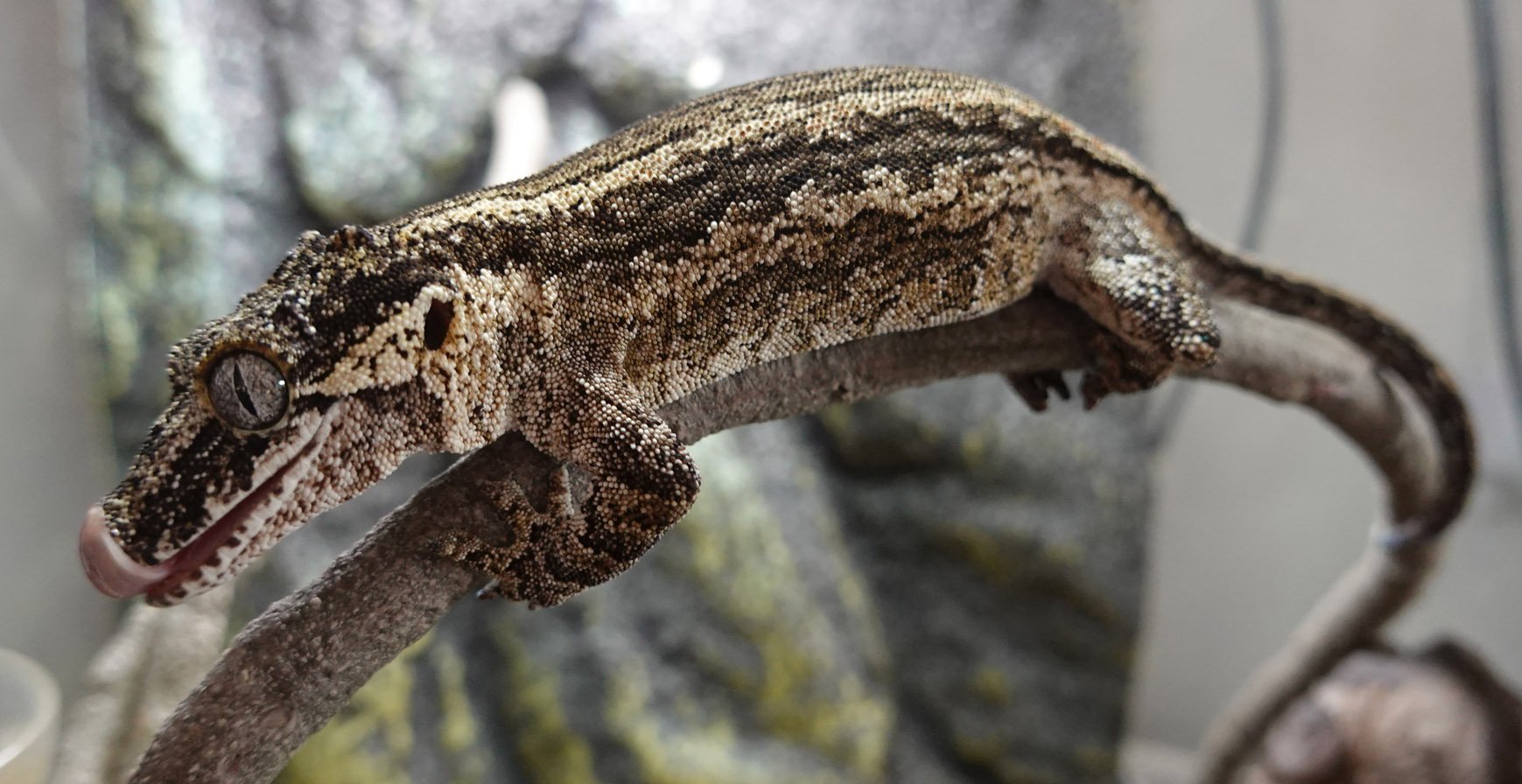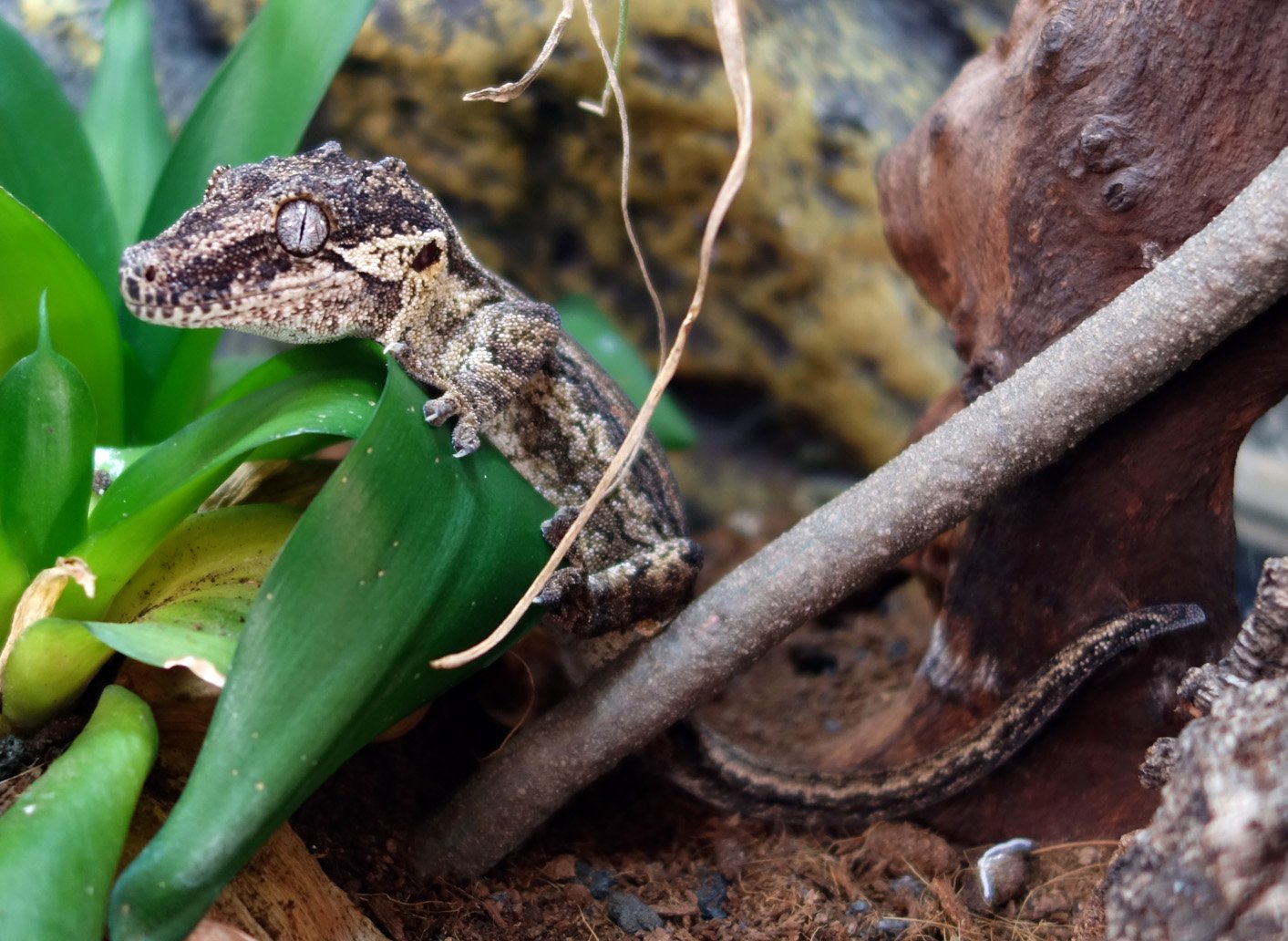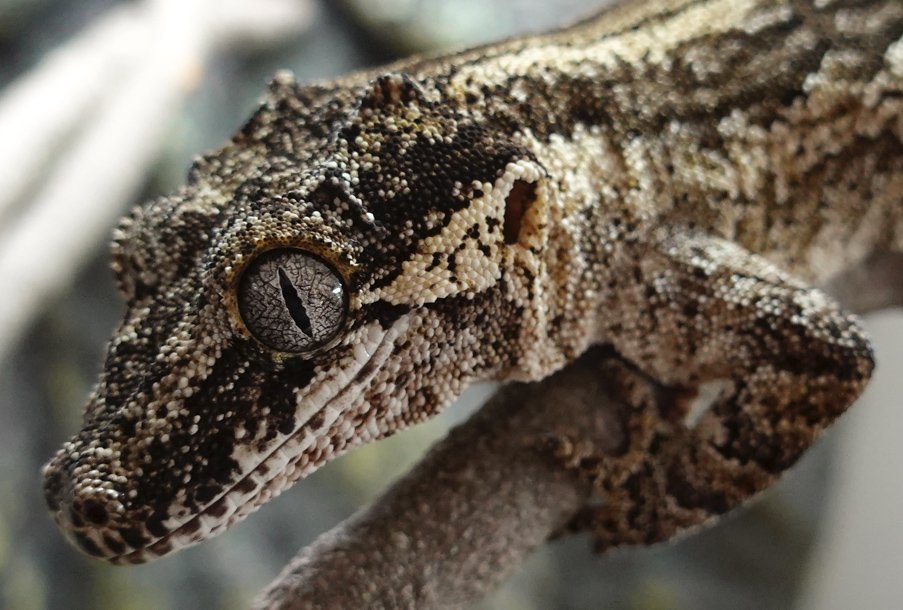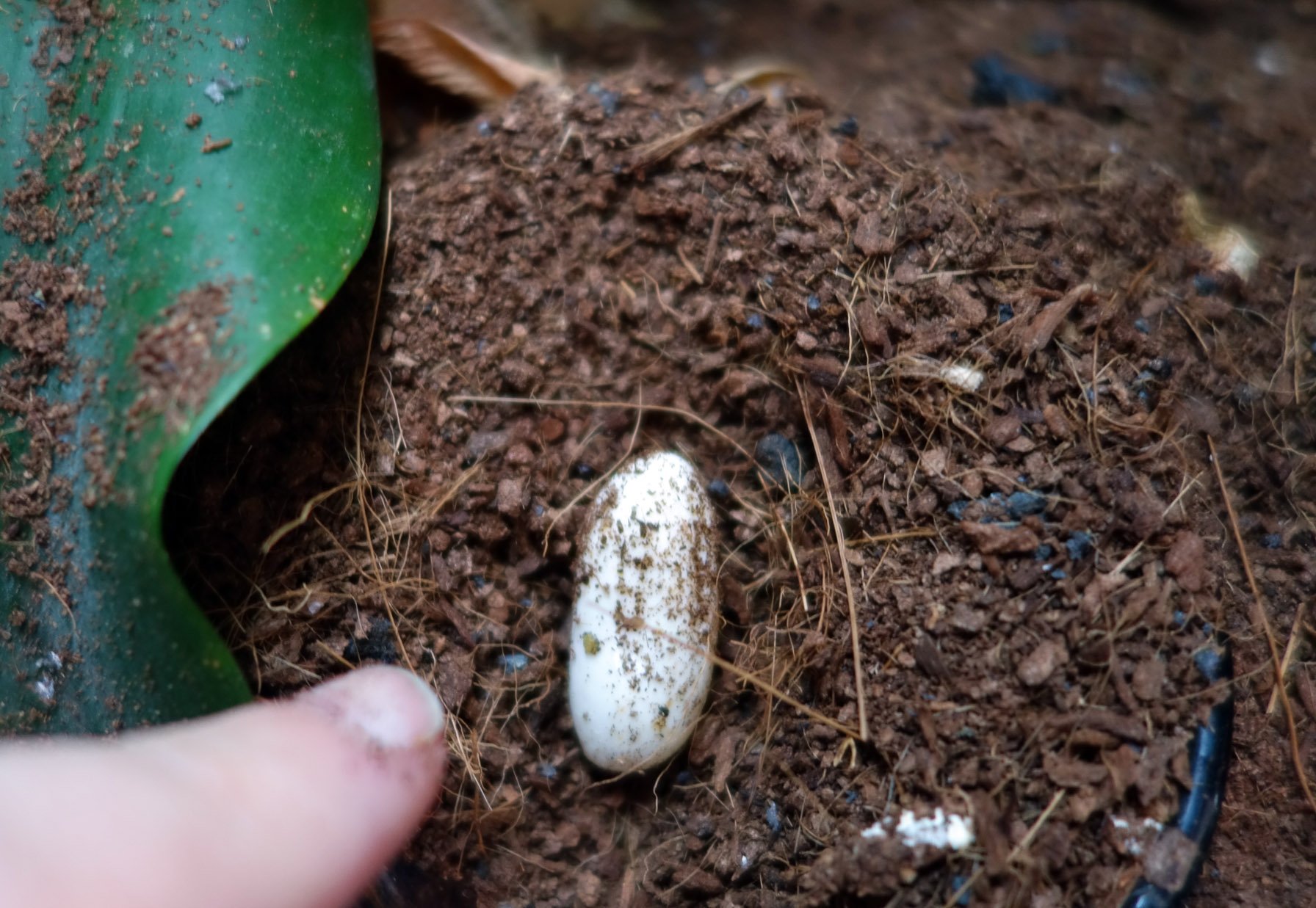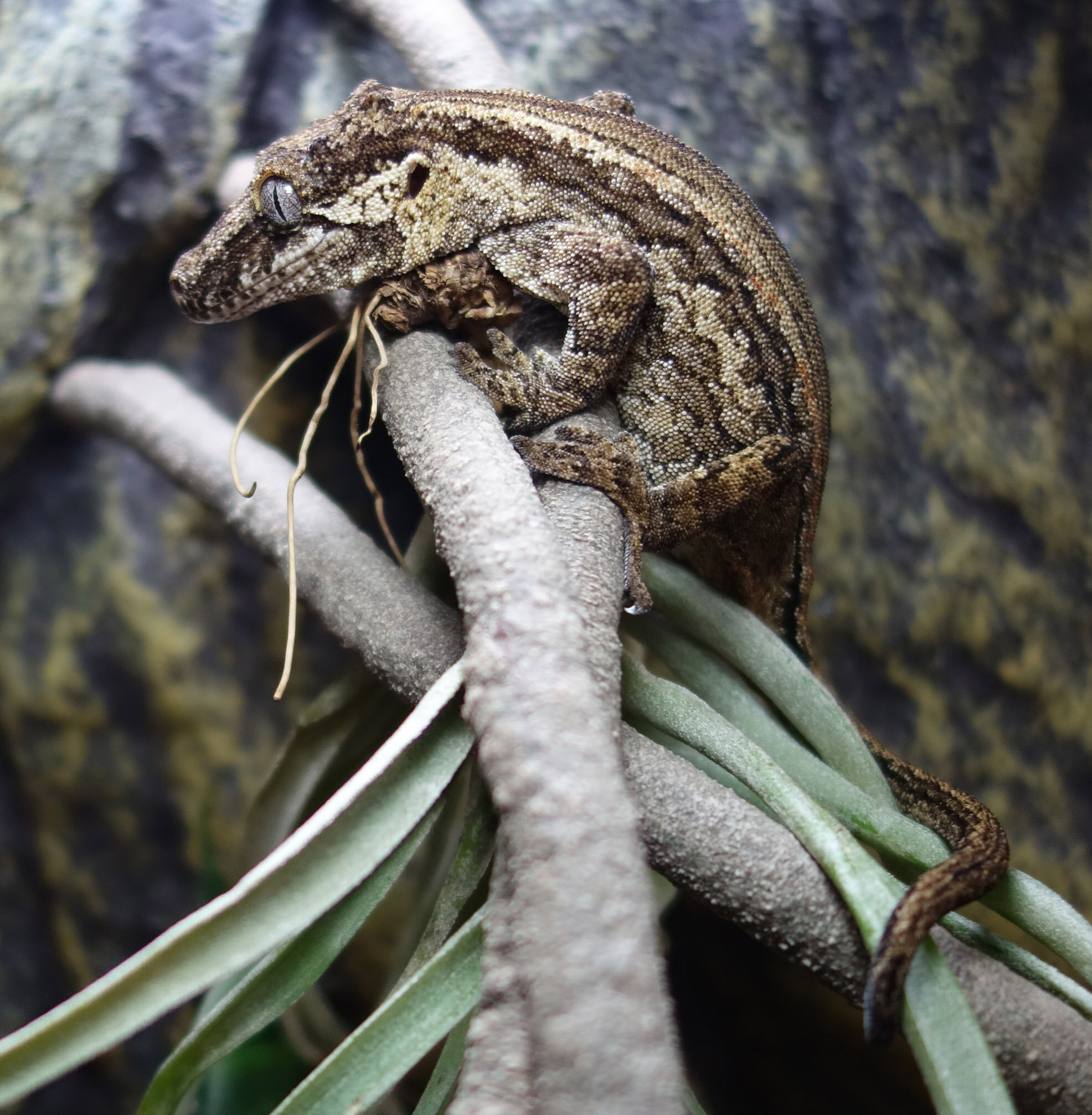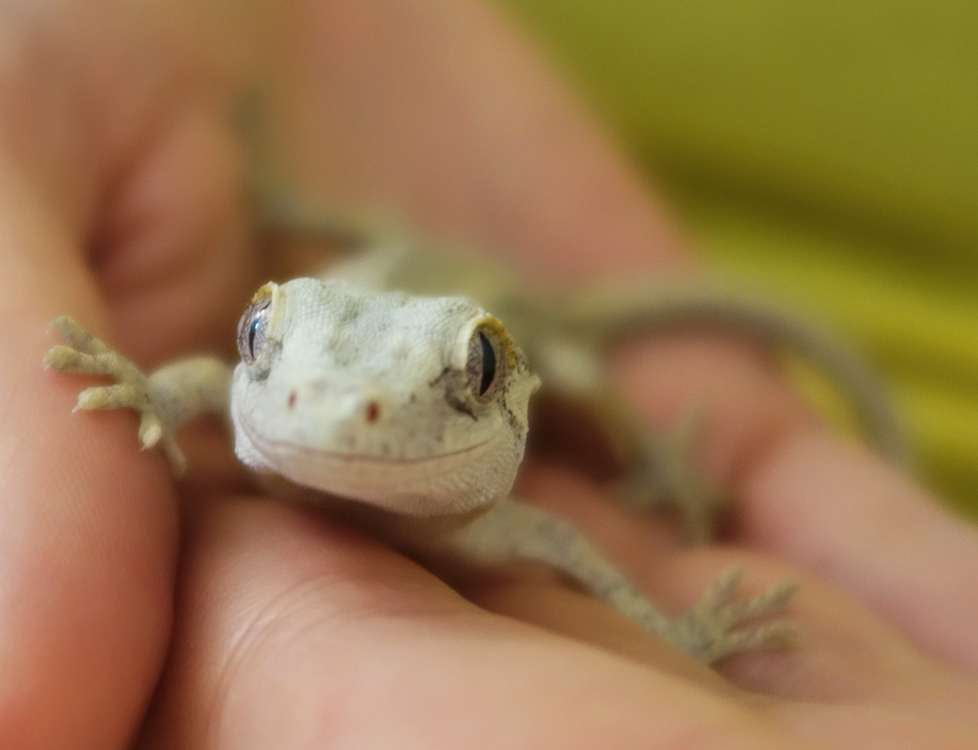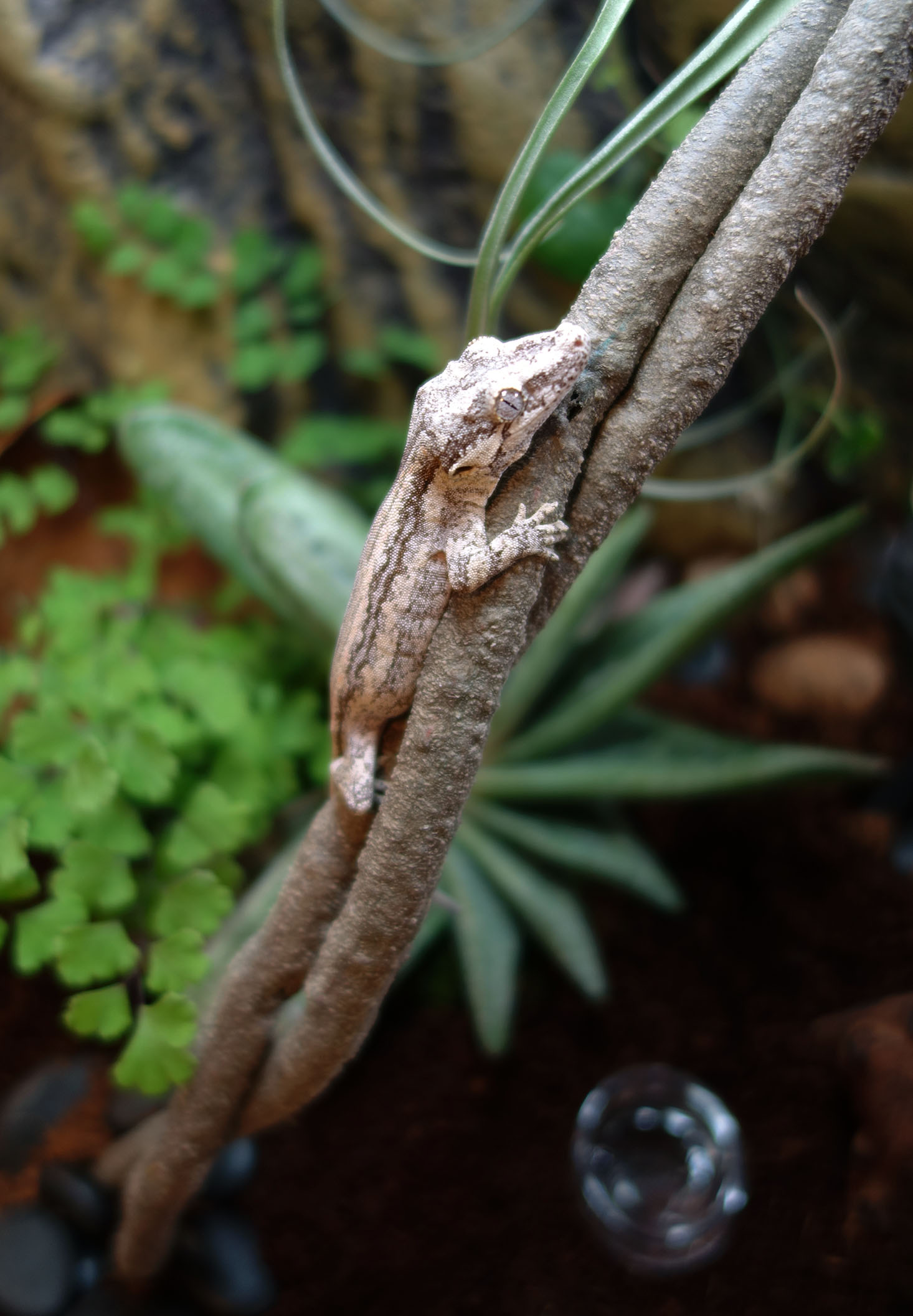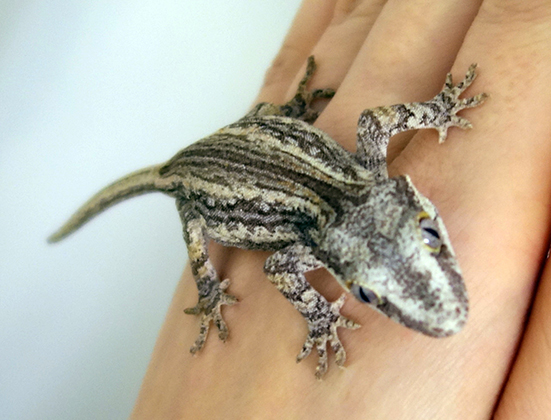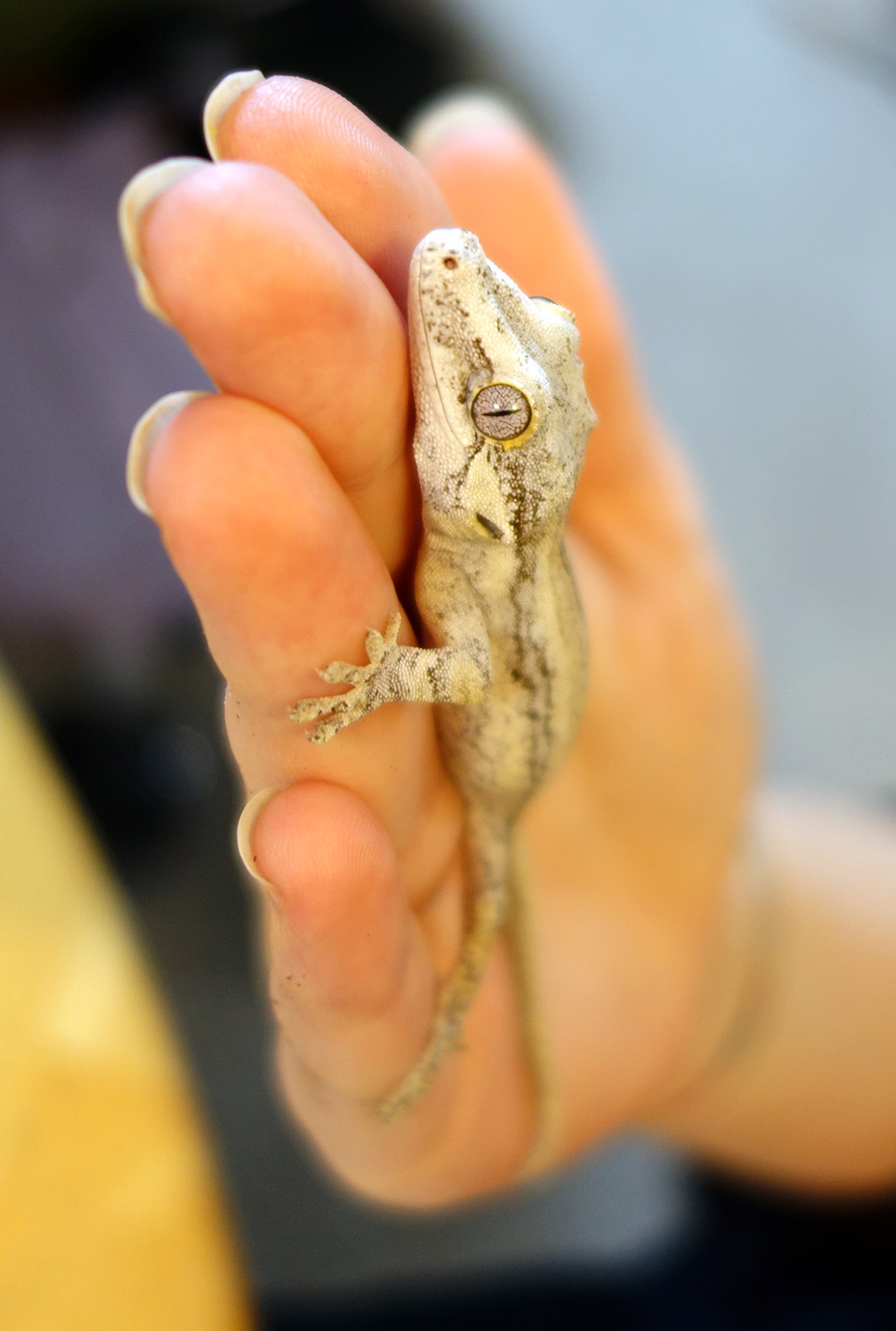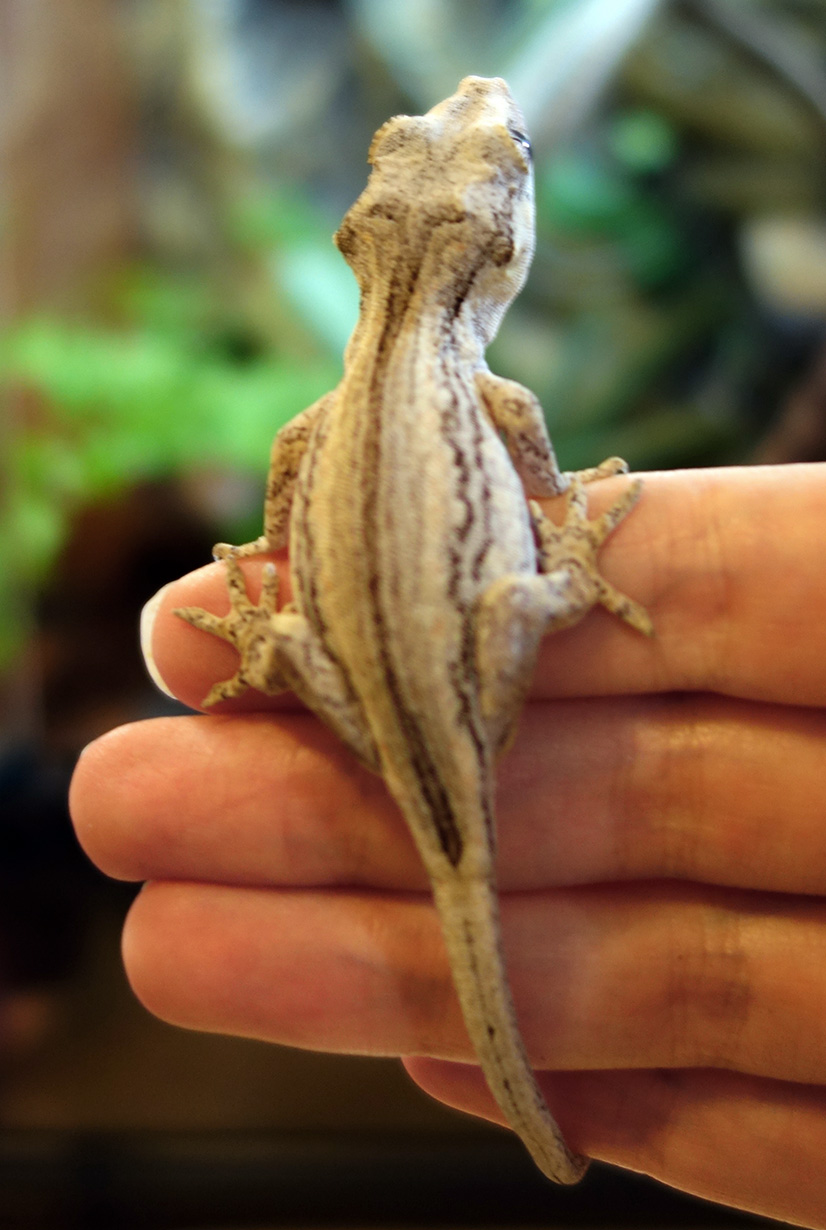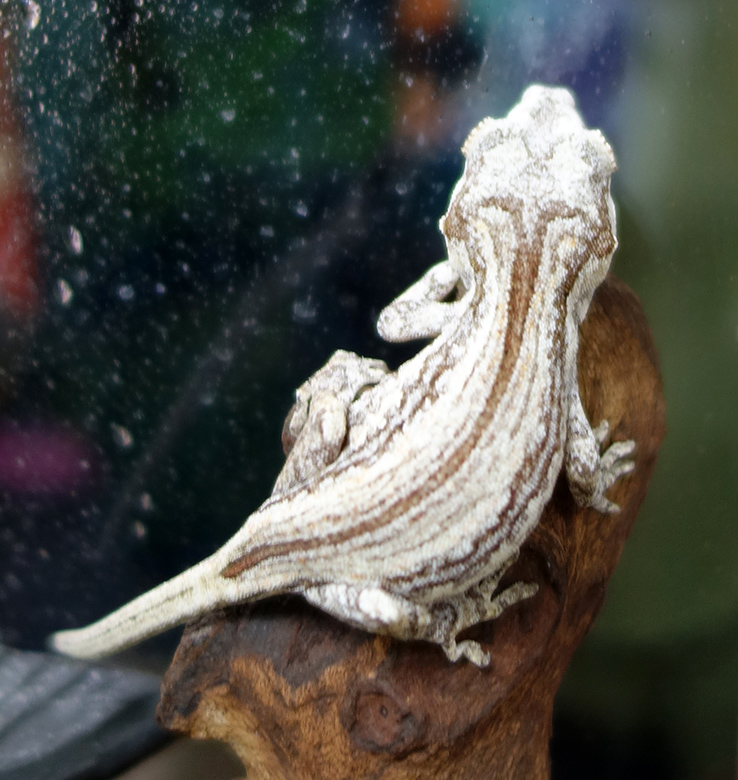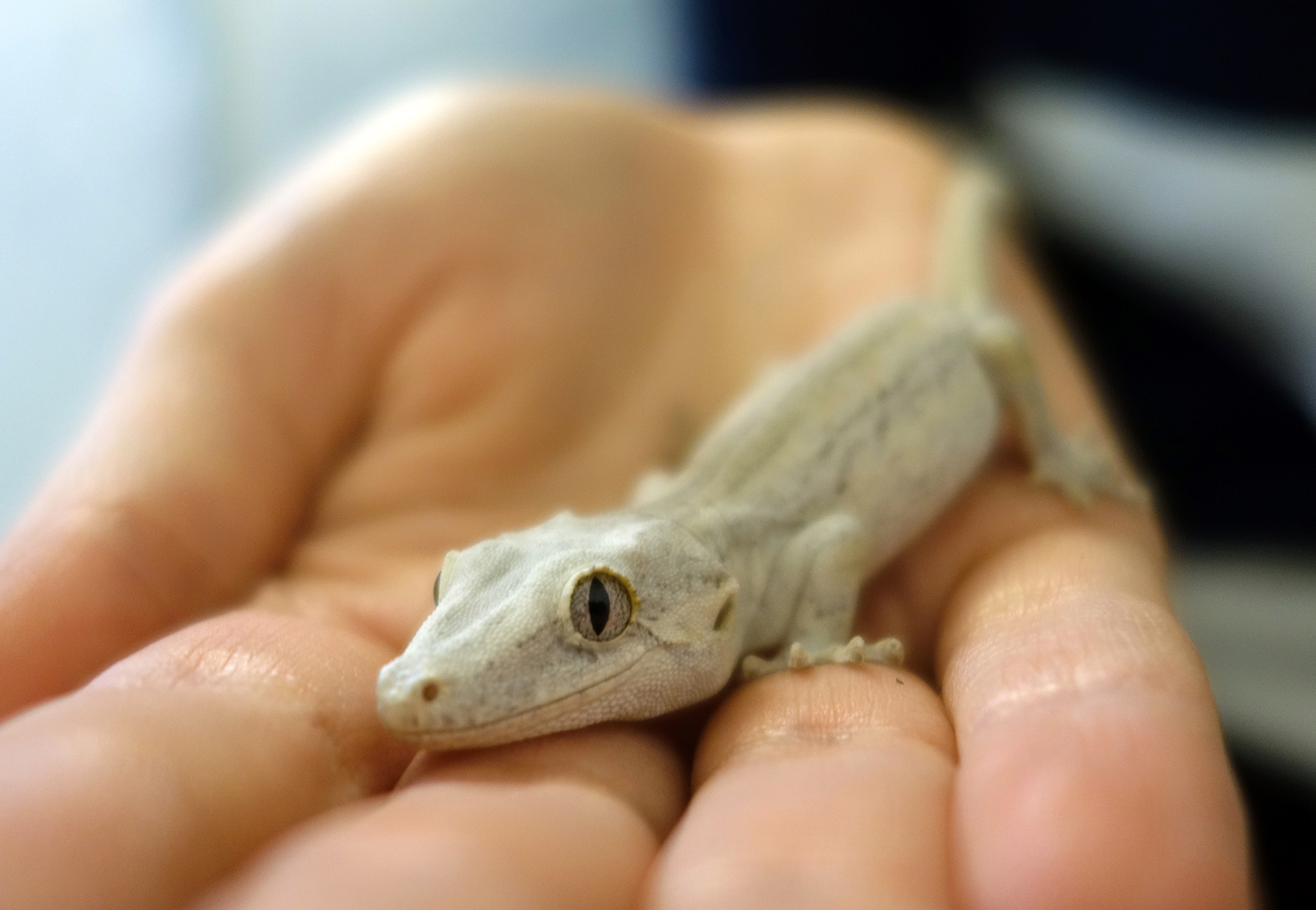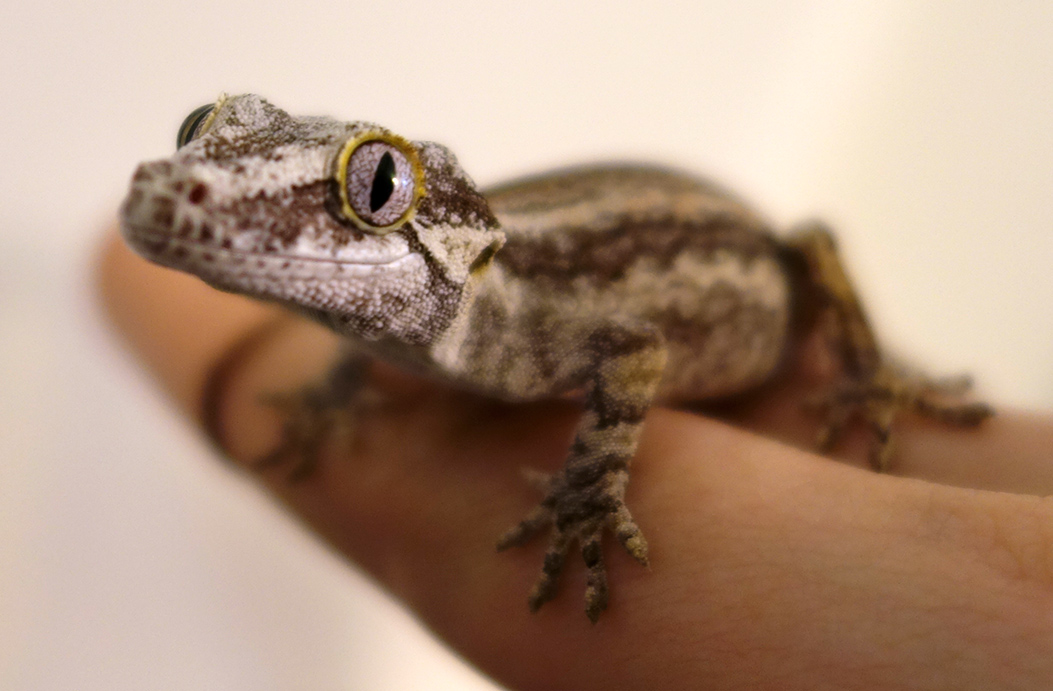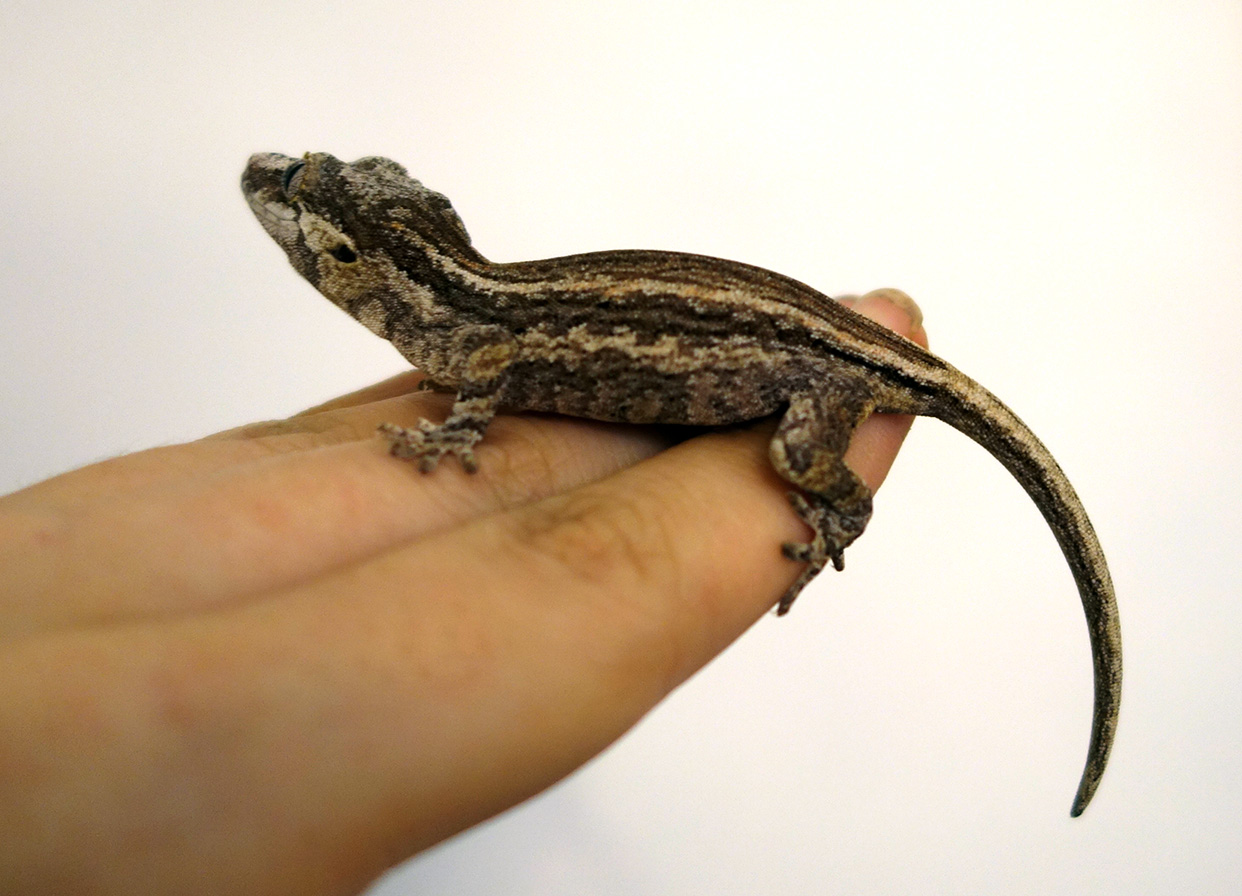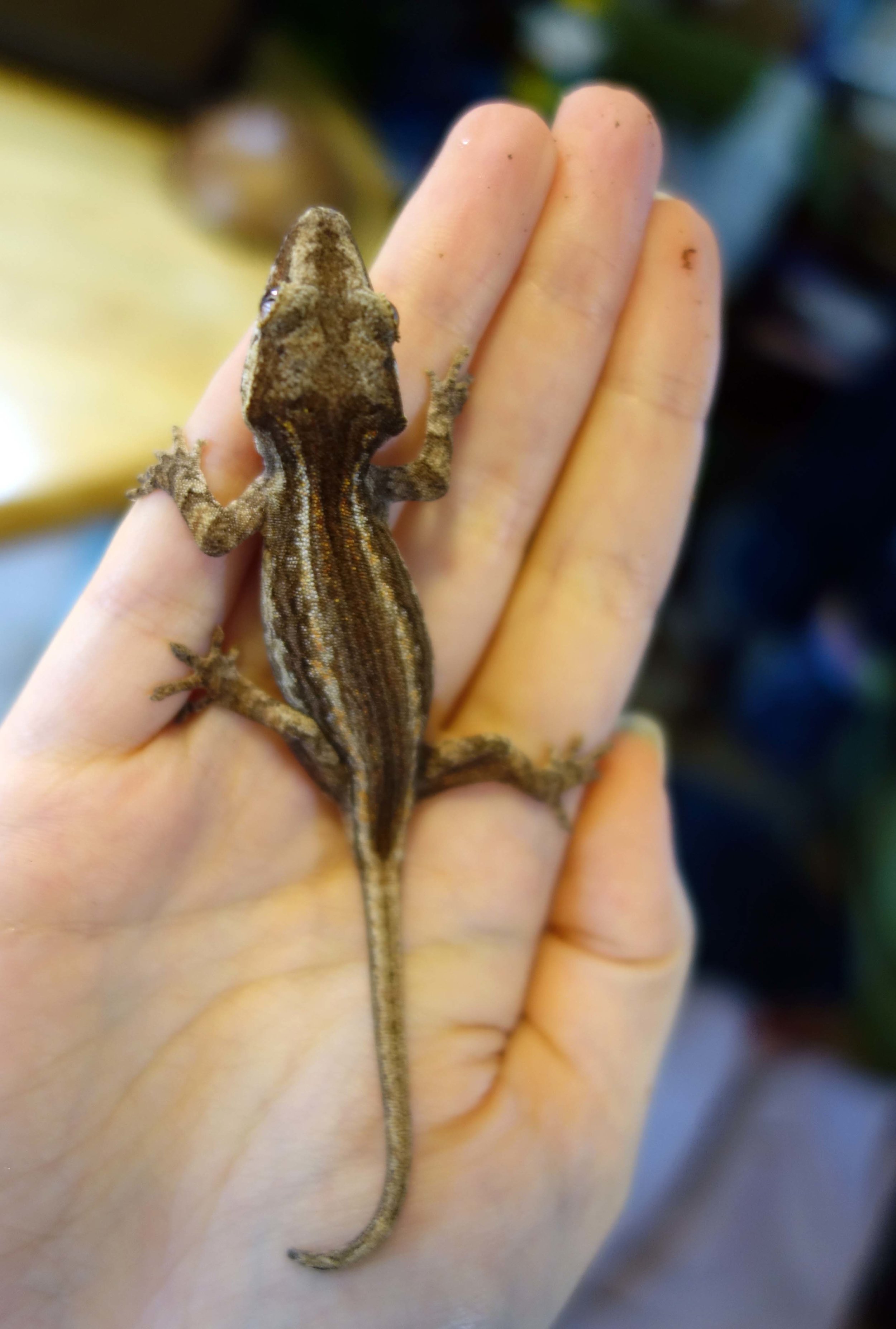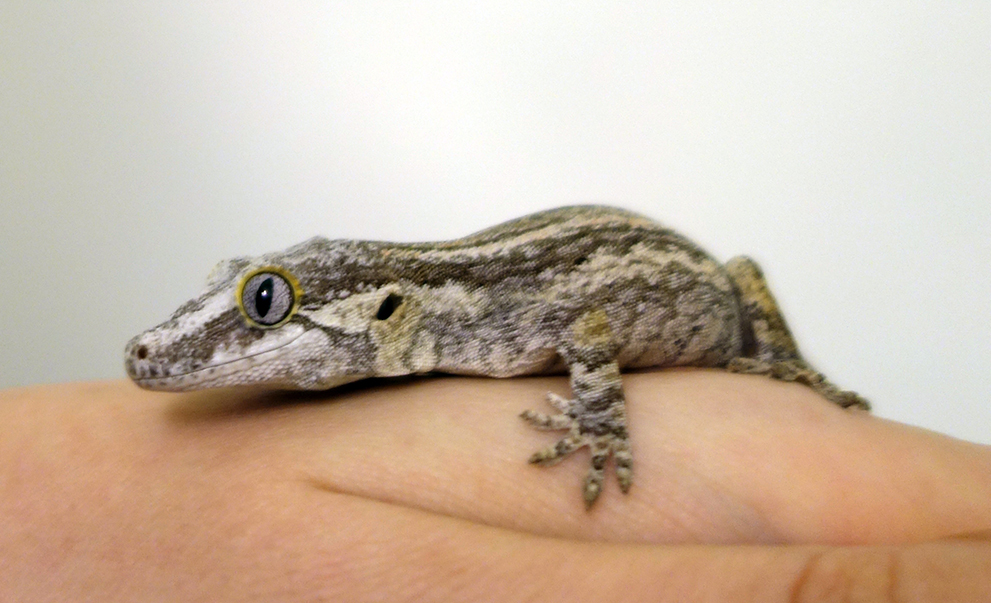I’ve had my gargoyle gecko Ashlar for six years now as my only pet, though I also keep hundreds of houseplants as well.
An opae ula shrimp swimming next to a Malaysian trumpet snail in my new tank.
Recently I decided to branch out into keeping what are colloquially called “Hawaiian volcano shrimp” or “opae ula,” Halocaridina rubra. These shrimp are special because they are extremely adaptable, long-lived (lifespan is over twenty years!), and have a very small biological footprint which requires minimal care (no filtration, no water changes beyond topping up to combat evaporation, no heaters, no airstones, rarely providing supplemental food beyond what naturally develops in the tank). The one curveball to their care is that they live in brackish waters, and can handle a variety of salinities but prefer about 1.010. Brackish water is a bit limitation in terms of what other species of fauna and flora you can keep alongside them; most aquatic plants are either freshwater or saltwater and will “melt” in brackish conditions. There are just a couple forms of macro algae that keepers have identified that are safe. In terms of other fauna, the most recommended tankmates are Malaysian trumpet snails, sometimes called MTS for short: Melanoides tuberculata. These snails are typically a freshwater species but they can adapt to brackish conditions and are considered good tankmates for the shrimp as they are also detritivores, but they do more to turn over the substrate and clean the glass compared to the shrimp.
I made this three gallon jar aquarium using aragonite sand, coral I gathered from a Japanese beach, and basalt and lava rocks I gathered from Iceland. I added a Venus comb murex shell I purchased online, as I wanted some fine lines in the tank but have read that the commonly used “sea fan” gorgonian skeletons will break down over time and pollute the tank so I chose a safer route.
I then stocked the tank with a tiny brackish marimo (a form of macro algae) as well as a brackish Chaetomorpha macro algae, eight Malasian trumpet snails, and approximately thirteen opae ula shrimp. I say approximately because they were impossible to count with complete confidence - they came with the Chaetomorpha algae ball I bought from the same seller and were darting in and around it.
Here are some photos from the first couple days! This is the cleanest it will likely ever look, as it will begin to grow the biofilm and algae that will serve as the primary diet for the shrimp and snails.










